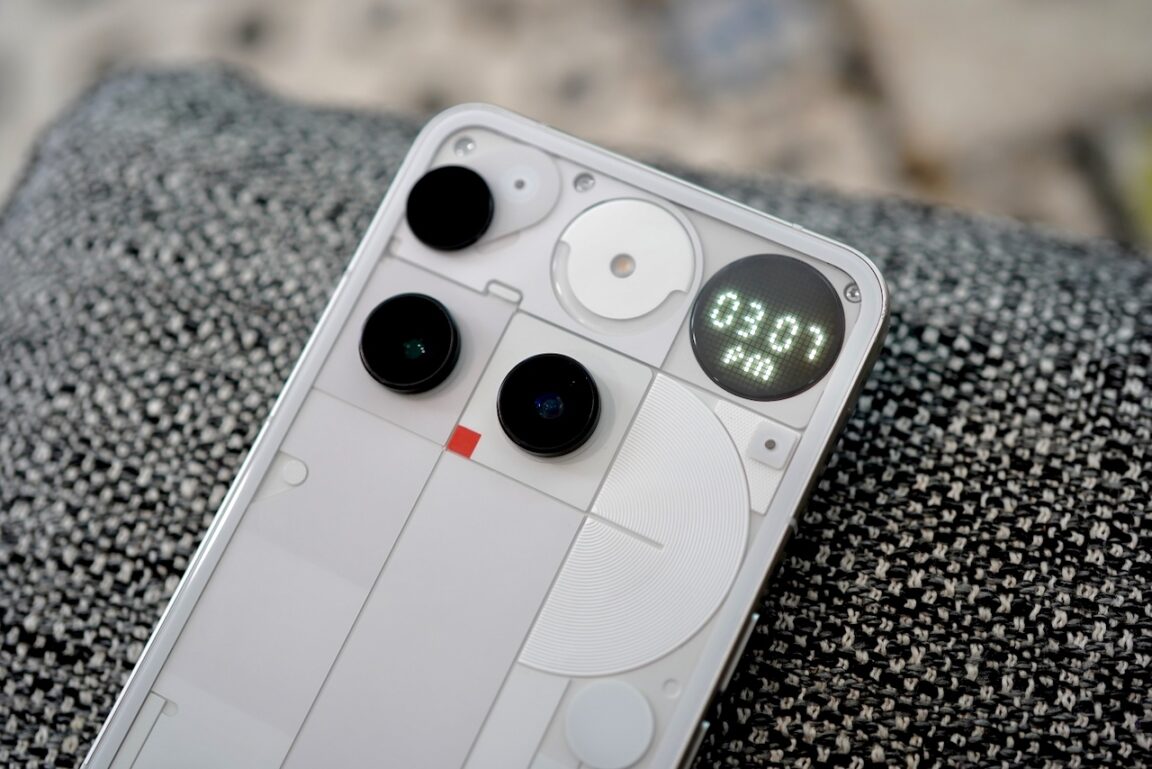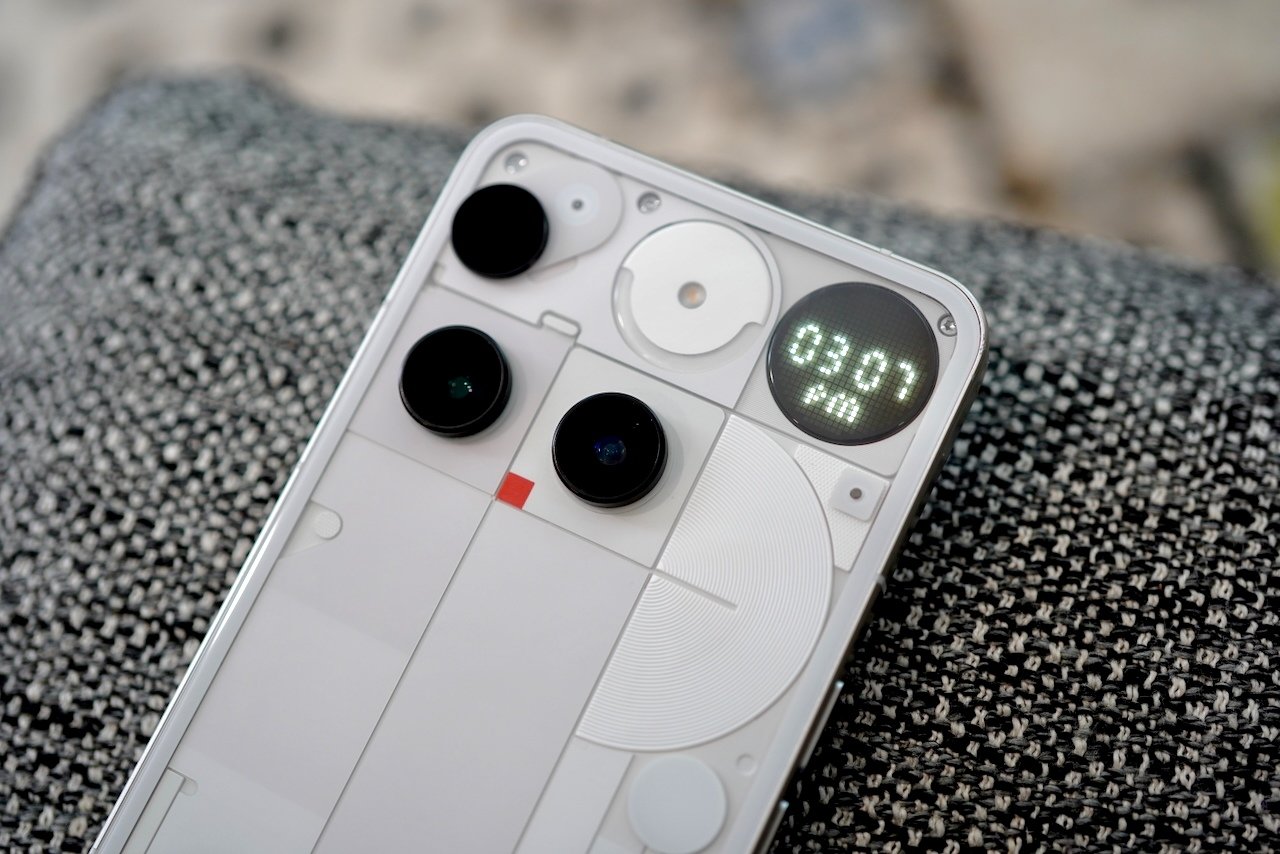
Nothing is the boldest phone maker on the market right now, unafraid to stray from the norm. The new Nothing Phone (3) builds on everything they’ve tried before and delivers something cleaner, smarter, and more fun. The design still turns heads, whether you love it or hate it. The Glyph LED strips have been upgraded to a highly capable LED matrix. Pretty much every spec and feature has been upgraded to flagship-grade, but the big catch this time around is that the price-point has also been upgraded.
Design and Screen
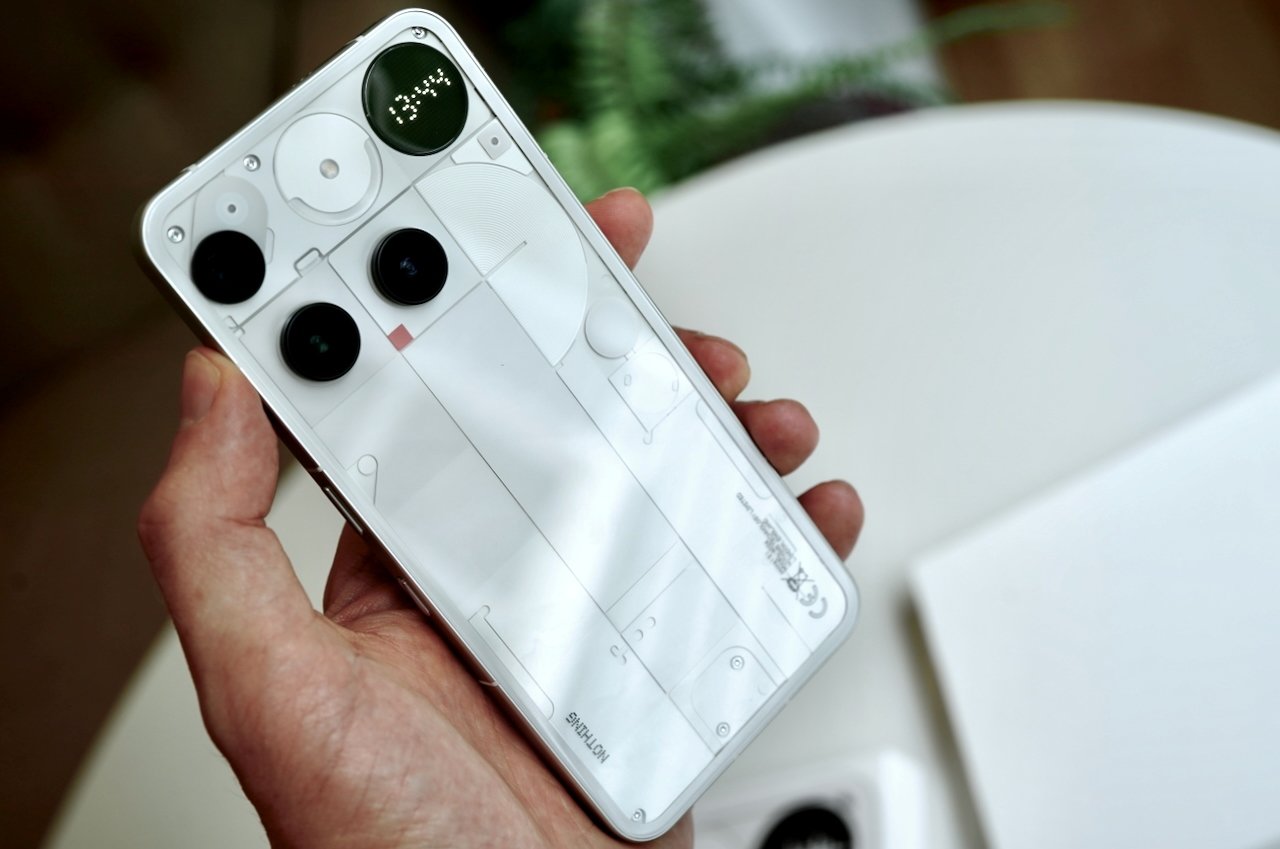
Nothing hasn’t given up on its transparent aesthetic, proudly showing off all its tech goodness. It’s easily one of the most interesting-looking phones on the market, with a distinct techie personality. The design is polarizing, but never boring. Most notably, there’s no raised camera island—just a few floating cameras oddly spaced apart.
The other eye-catching feature is the new Glyph Matrix, an LED array that forms a functional mini display. There’s also a red recording light that can pulse while capturing video. It’s completely optional, but a retro throwback that can help you create engaging content.
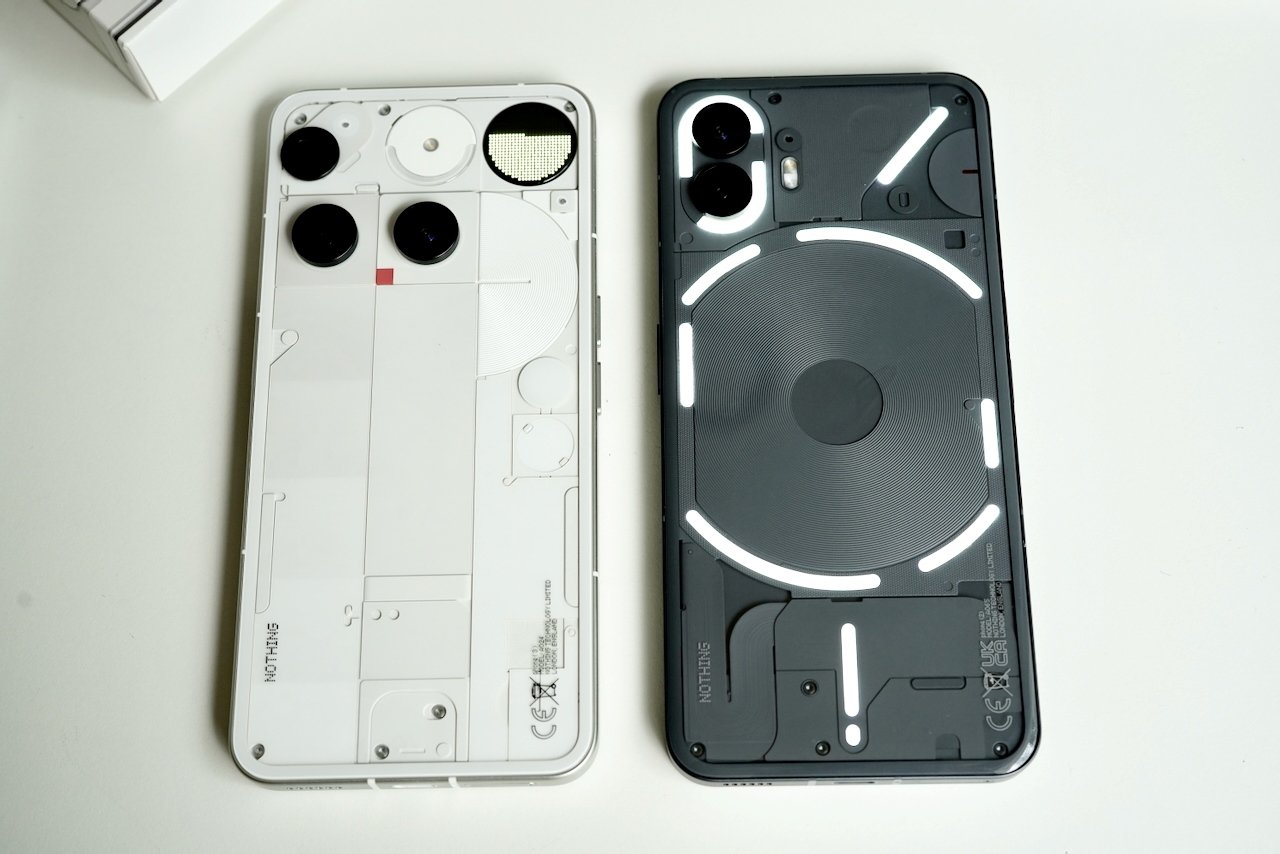
Beyond the quirky details, the build feels premium. The aluminum frame and rounded edges are a clear upgrade over the (3a)’s plastic shell. It’s a large phone, but small bezels and curved sides keep it comfortable in hand. At 218 grams, it’s not light, but it’s well balanced.
IP68 water and dust resistance makes it more durable than previous models, though the frame may scuff more easily than you’d expect—I dropped it a foot onto stone and ended up with a few dings.
It ships with a clear silicone case, which I probably should’ve used. The Gorilla Glass 7i front and Victus back held up fine, and while the factory-applied screen protector scratches easily, it’s an easy swap for a real glass one.
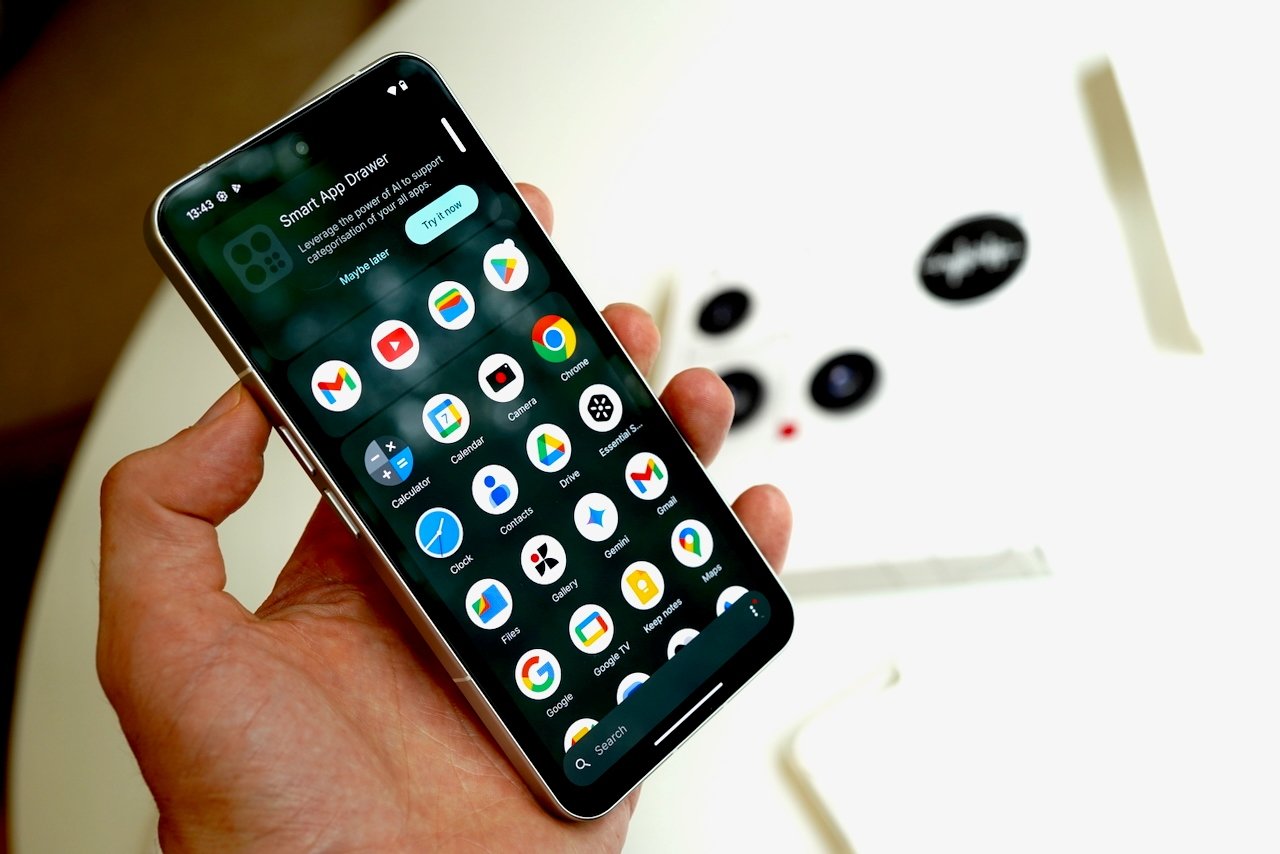
The screen is excellent. It’s colorful, sharp, and bright. It’s a 6.67-inch flexible AMOLED with a 1260×2800 resolution (460 ppi), HDR10+ support, and 10-bit color depth. Peak brightness hits an impressive 4500 nits for HDR content, with 1600 nits outdoors and 800 nits typical.
It’s also responsive, with a 120Hz adaptive refresh rate (not LTPO), 1000Hz touch sampling, and 960Hz PWM dimming for eye comfort. It may not set new records, but it absolutely qualifies as flagship-grade.
Glyph System
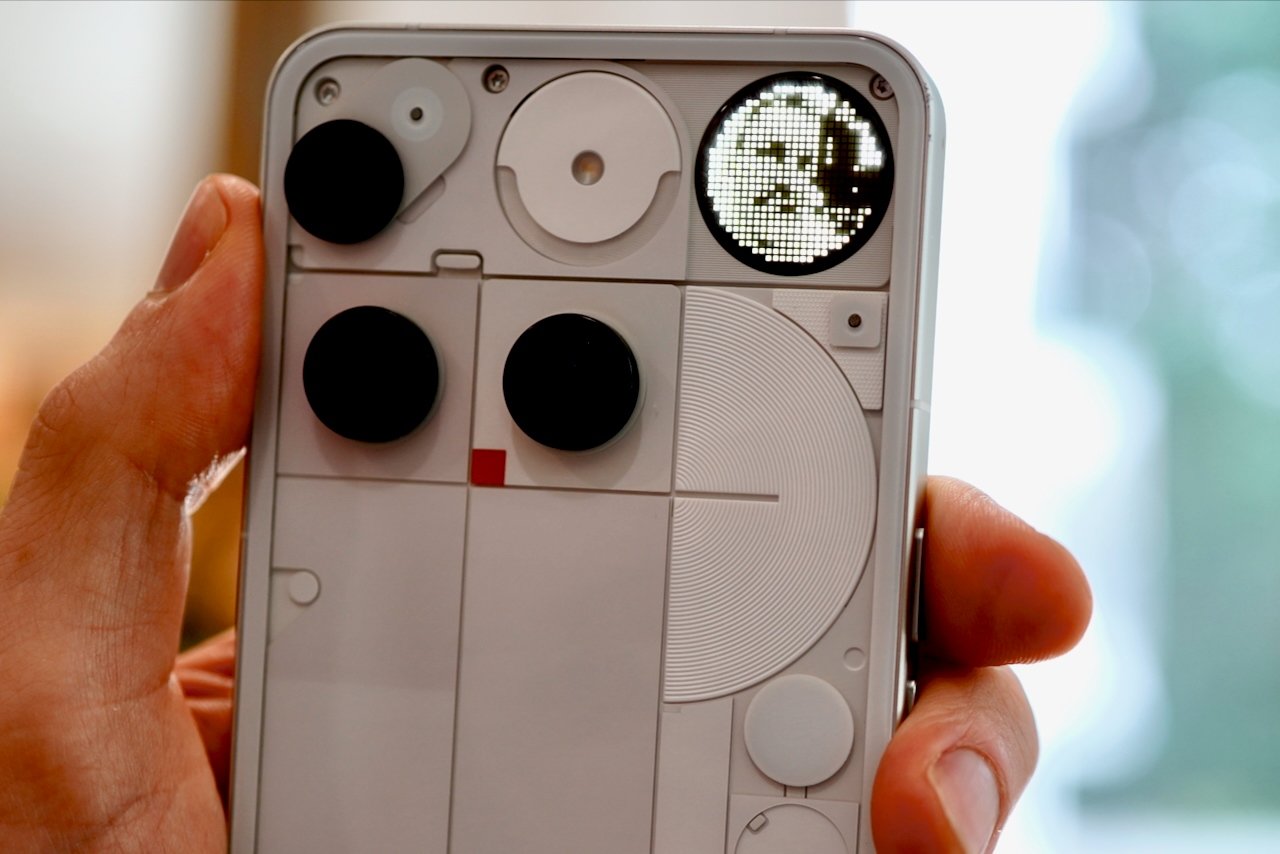
This is the first time Nothing’s signature Glyph lights feel like more than a party trick. The new Glyph Matrix can show the time, run a stopwatch, display notifications, play games, and even help frame a selfie. They’ll also act as a visual display for your volume level when using the volume buttons.
There’s a round button seamlessly integrated on the back of the phone that controls the Glyph system. A single press cycles through the various “toys,” while a long press activates them—like starting a timer or kicking off Rock Paper Scissors. The button takes a deliberate press to trigger, and you’ll need to dig into settings to make sure the toys stay enabled.
One of the toys uses the rear camera to create a low-res, pixelated mirror which you can even use to take selfie photos with your rear camera. There’s no way to turn the mirror on while in the camera app, but as a fun way to take a selfie with a much better “selfie camera” it’s perfect. There’s a developer SDK and unlimited possibilities so we’re likely to see a mix of fun and useful glyph apps in the future.
Performance and Nothing OS
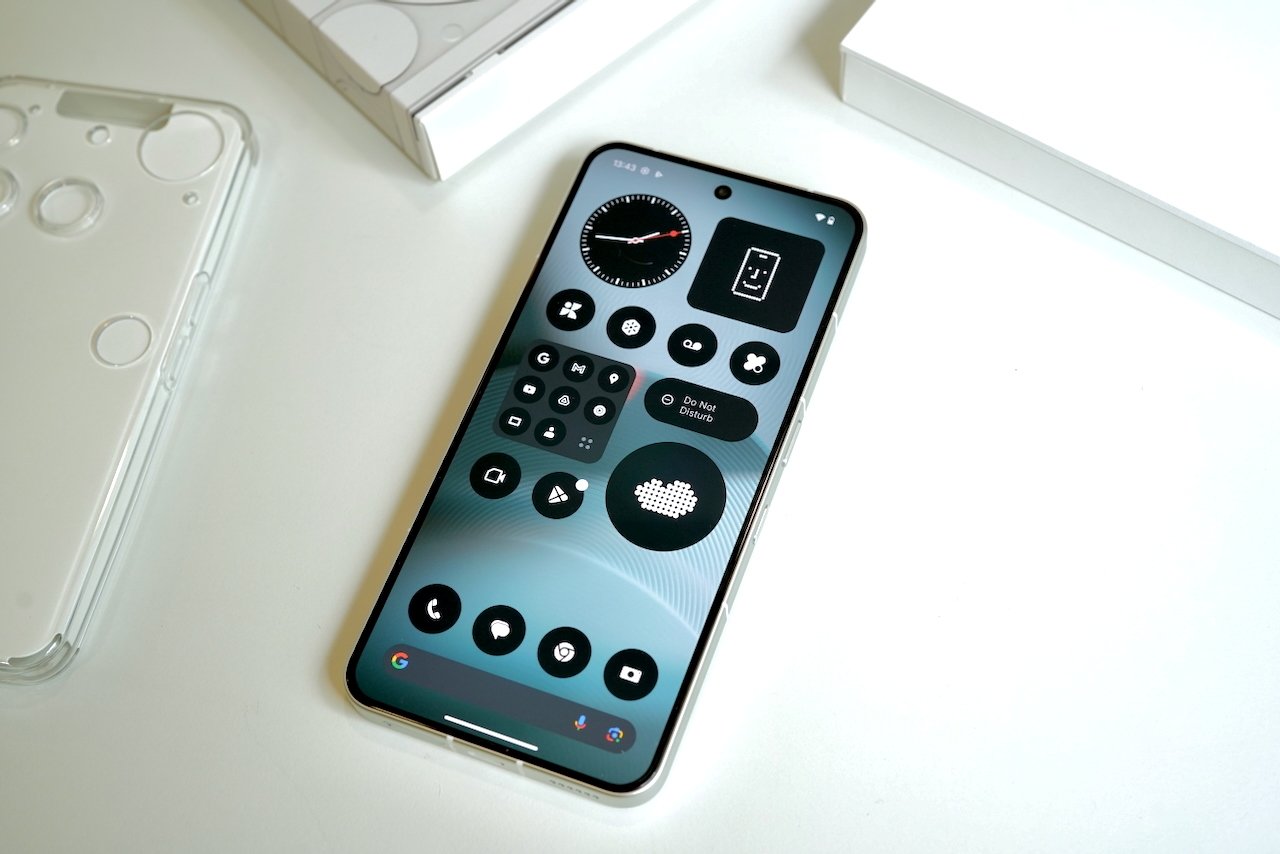
The Snapdragon 8s Gen 4 isn’t Qualcomm’s top-tier chip, but in real use it doesn’t feel like a compromise. Apps launch quickly, multitasking is smooth, and the phone stays responsive even with heavy use. It’s hard to make this phone sweat, and unless you’re gaming at max settings or benchmarking for sport, you’re unlikely to feel like you’re missing out. I got an AnTuTu 10 score of 1,800,152, and I’ve seen others online get closer to 2 million with this phone.
Nothing OS remains one of the cleaner Android skins out there. It’s light, mostly unobtrusive, and easy to get used to. You won’t find piles of unnecessary features or preinstalled junk, though a few more built-in personalization options wouldn’t hurt. Fortunately, Android still gives you room to tweak things the way you want.
Additional Features and Specs
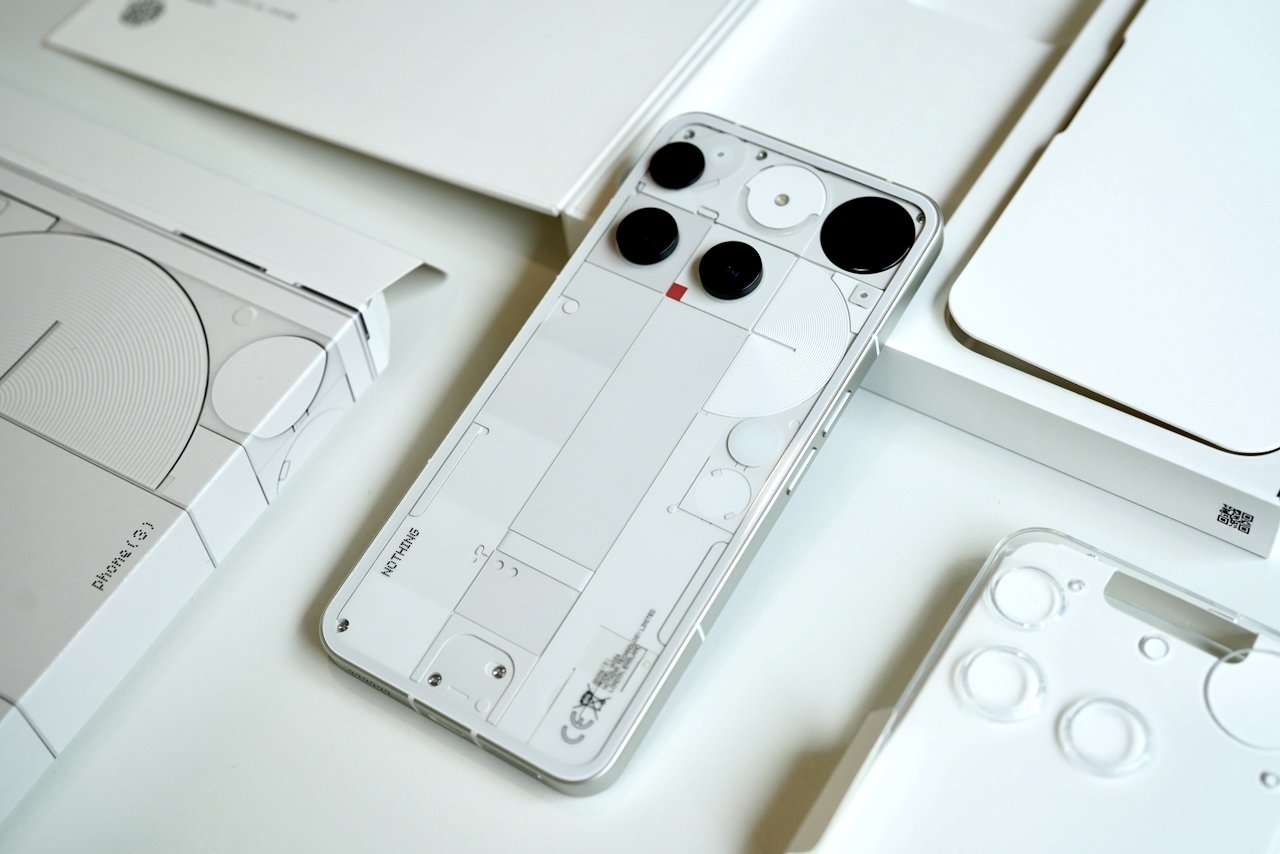
Nothing didn’t cut corners on materials or durability. The front uses Gorilla Glass 7i and the back is Gorilla Glass Victus, while the aluminum frame adds a premium touch. It’s IP68 rated for dust and water resistance, putting it on par with other flagships in terms of durability.
There’s support for both eSIM and dual physical SIMs, which is rare and genuinely useful. You also get Wi-Fi 7, Bluetooth 6.0, NFC, stereo speakers, and a fast in-display fingerprint sensor. Under the hood, storage goes up to 512GB UFS 4.0, and RAM tops out at 16GB LPDDR5X. Software support is impressive—Nothing promises five years of Android OS updates and seven years of security patches, a level of commitment few phones at this price offer.
Camera

Nothing went all in on hardware this year with four 50MP sensors: main, ultra-wide, periscope zoom, and front-facing. You get 4K at 60 fps across all lenses. The main sensor is large, quick to focus, and reliably nails exposure, making it easy to grab a shot without fuss. Photos come out crisp, colorful, and well-balanced.

Night Mode keeps noise in check without overprocessing, and the periscope gives you true 3x optical zoom with surprisingly good detail into its digital range. Ultra XDR video processing smooths contrast and highlight rolloff, and features like Action Mode, Macro (via the periscope), and Night Mode add flexibility.
In side-by-side shots with my iPhone 16 Pro, the rear cameras held their own—often coming down to personal taste more than a clear winner. The lens layout is a little odd, spaced wider than most phones, but it doesn’t affect use and makes it harder to smudge everything at once.
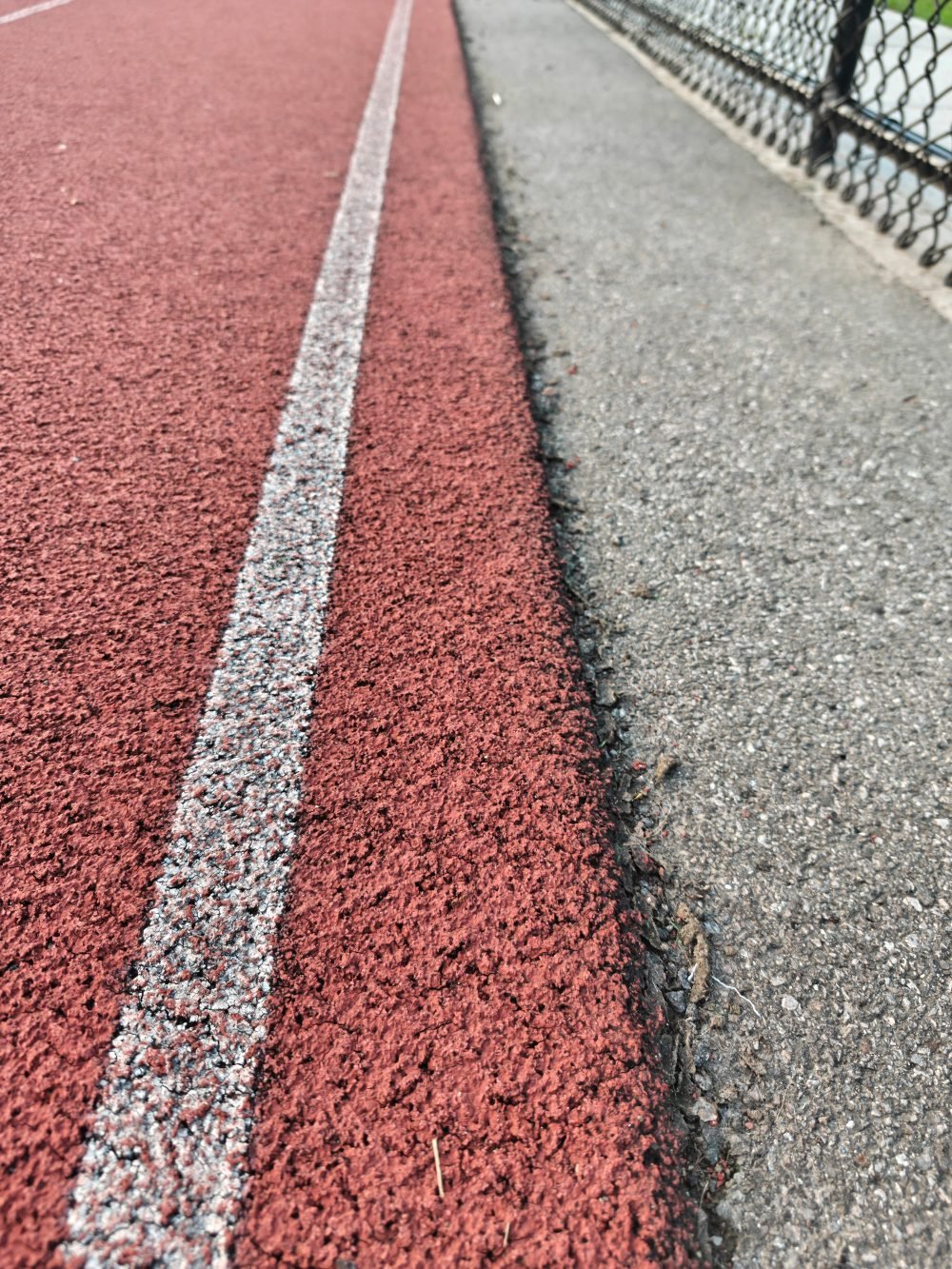
Video is impressively stable, and 4K/60 support across lenses makes this a genuinely capable mobile content tool. The selfie camera is the weakest link. It’s fine for casual use, but processing leans heavy, especially with flash, which can flatten and over-light faces. Still, this is a fast, consistent, and high-quality camera system that delivers where it counts.
Battery
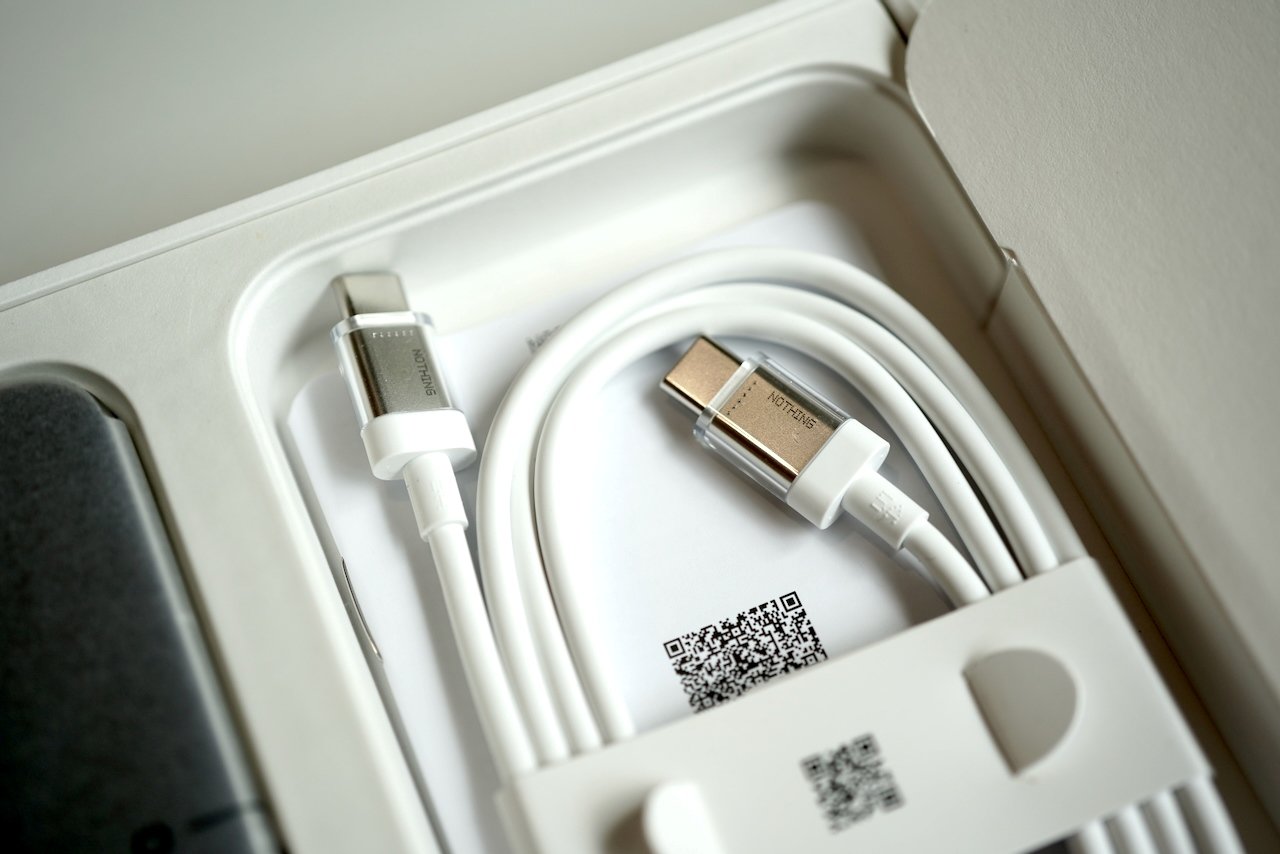
The Phone (3) checks pretty much all the boxes you could want for a battery. It has Nothing’s largest battery yet, a 5150mAh silicon-carbon cell that comfortably lasts a full day and then some. It can charge fast up to 65W. And it has 15W wireless charging as well as reverse charging so you can juice up other devices with it on the run.
I observed 60W charging initially when the phone was completely dead, but most of the time it charges around 40W. My charges went from 0% to 29% in 10 minutes, which is good. It’s supposed to charge to 100% in 54 minutes, and it did when the phone was off the whole time. With the phone on, and charging, it took a bit over an hour to get to 100%.
Essential Space and AI
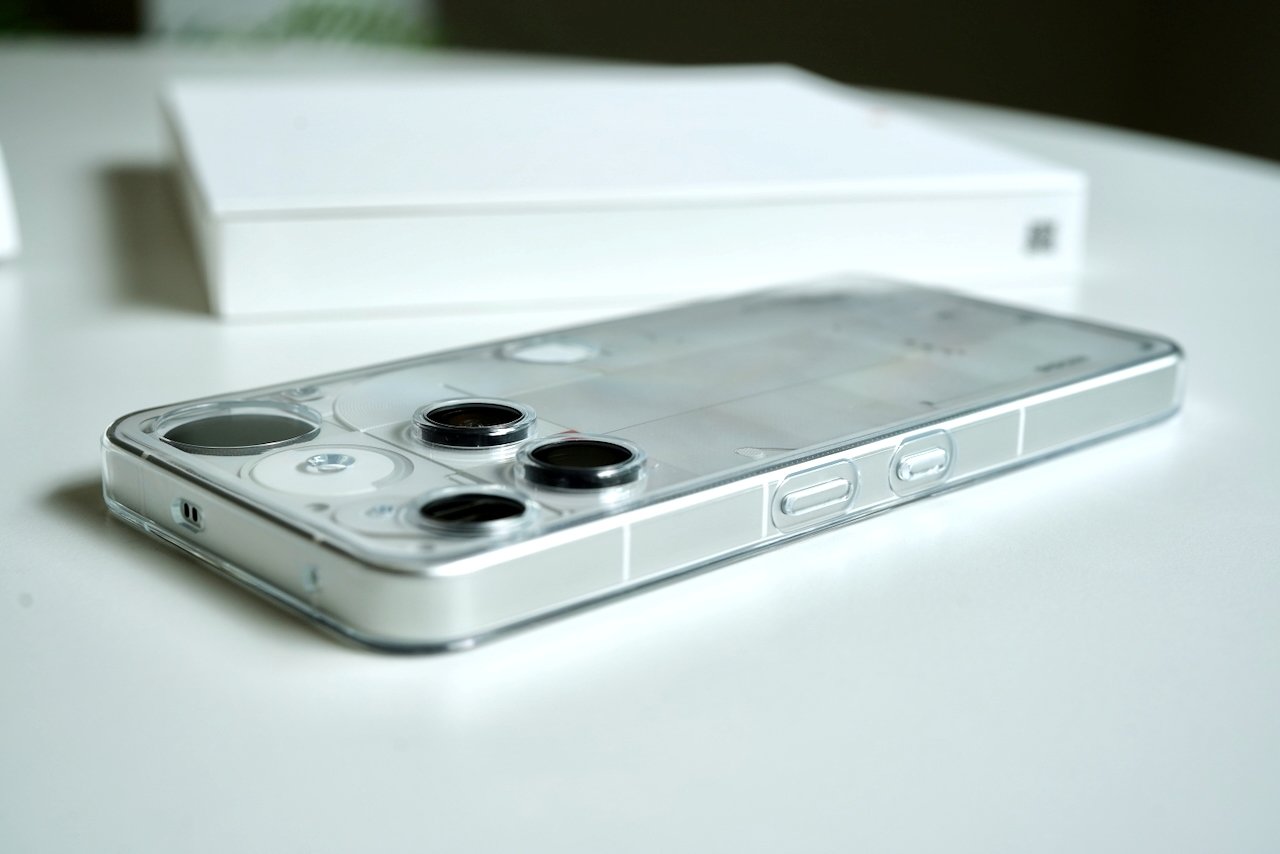
The Essential Space is Nothing’s AI solution for you to organize your life and lean into your creativity. With the dedicated Essential Key button you get quick access to capture your screen, take down notes, record voice notes or conversations, or make sense of it all with the help of AI.
It’s still in its early days, and it’ll take time to build habits around it. But the idea of a system that quietly catches and organizes thoughts in the background is intriguing. The most notable catch is that your essential space is only available on your Nothing phone, as of now.
You may find the Essential Space a bit intimidating at first and that’s where Nothing scored with the Gemini and ChatGPT integration. Gemini is baked into the voice assistant and you can share your screen live or just share your current screen. ChatGPT has some native shortcuts and also is available anytime you take a screenshot. Both AI tools are very handy and easy to incorporate into your everyday life.
Final Thoughts
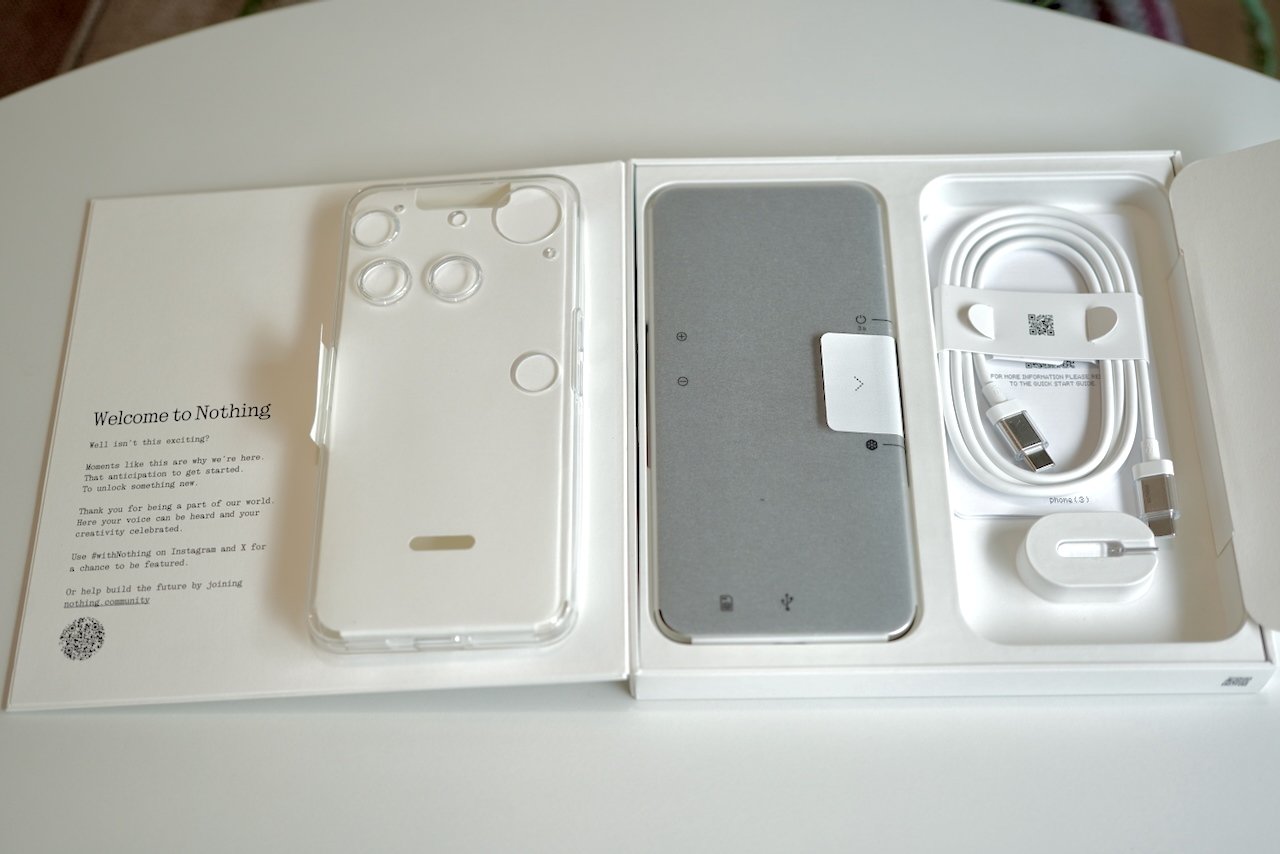
While the internet may argue over whether this phone truly qualifies as a flagship, or if it offers better value than a Pixel 9 or Galaxy S25, the Nothing Phone (3) stands out as a top-tier device. It’s fast, fun to use, and brings something different to the table.
The design is bold, the software is clean, and the new Glyph features finally feel functional. No, it doesn’t top the spec charts in every category, but it delivers a premium experience that actually feels personal.
Starting at $799 for the 12GB/256GB model and $899 for the 16GB/512GB version, it’s not cheap, but it’s still more affordable than most traditional flagships. Pre-orders began on July 4 through Nothing’s site and select partners, with general availability starting July 15. If you’re looking for something that breaks out of the usual mold without sacrificing capability, this one’s worth a serious look.

